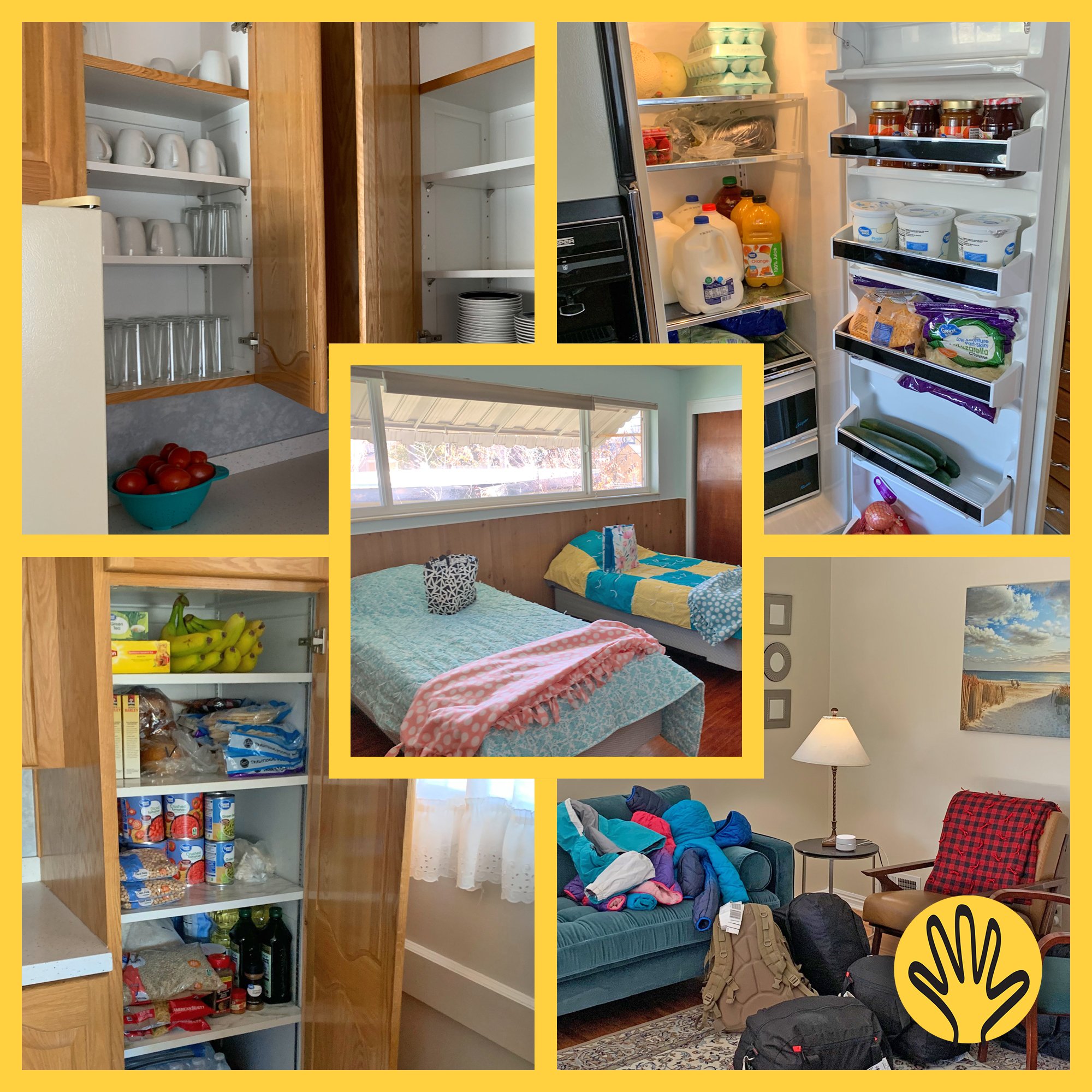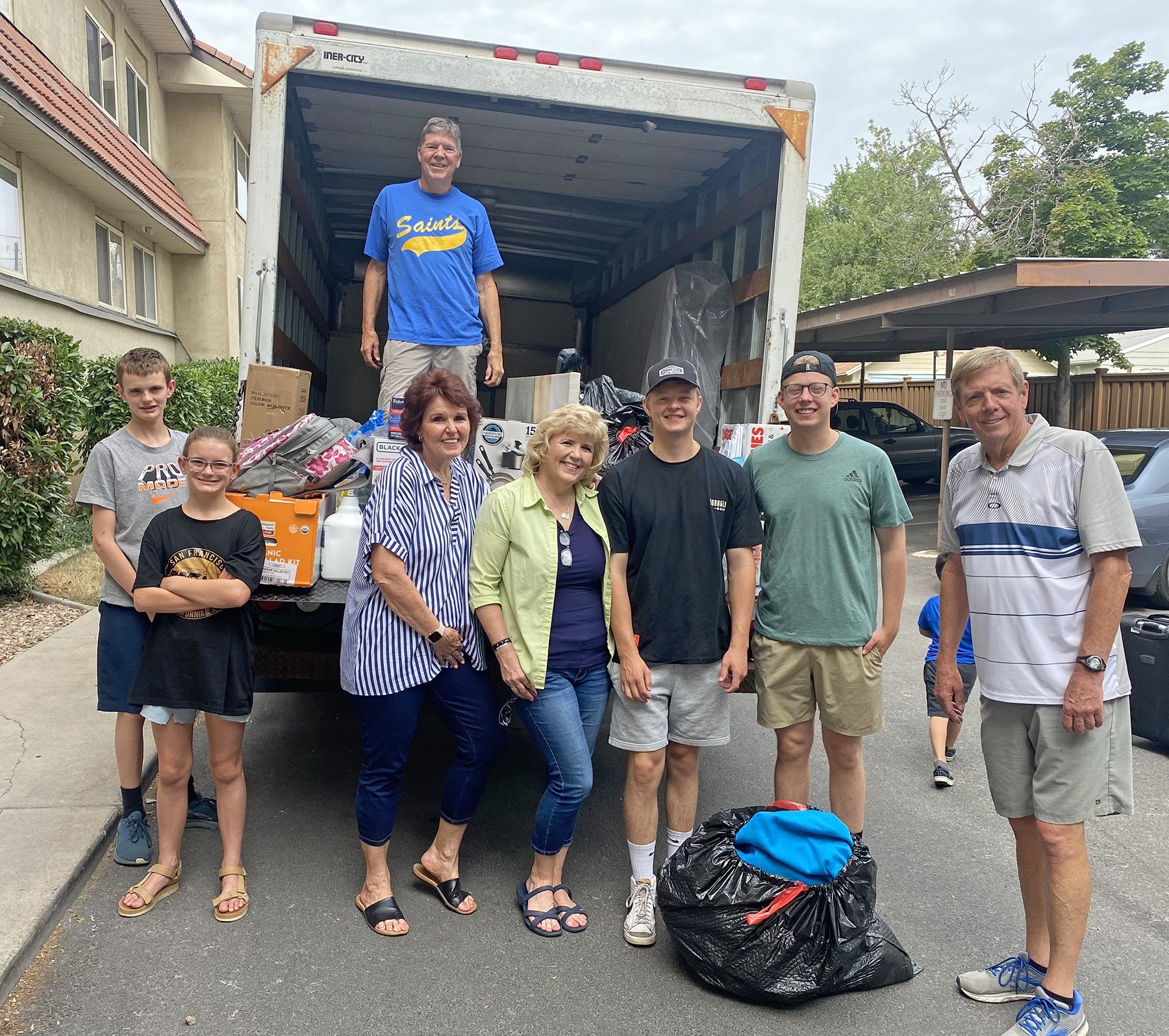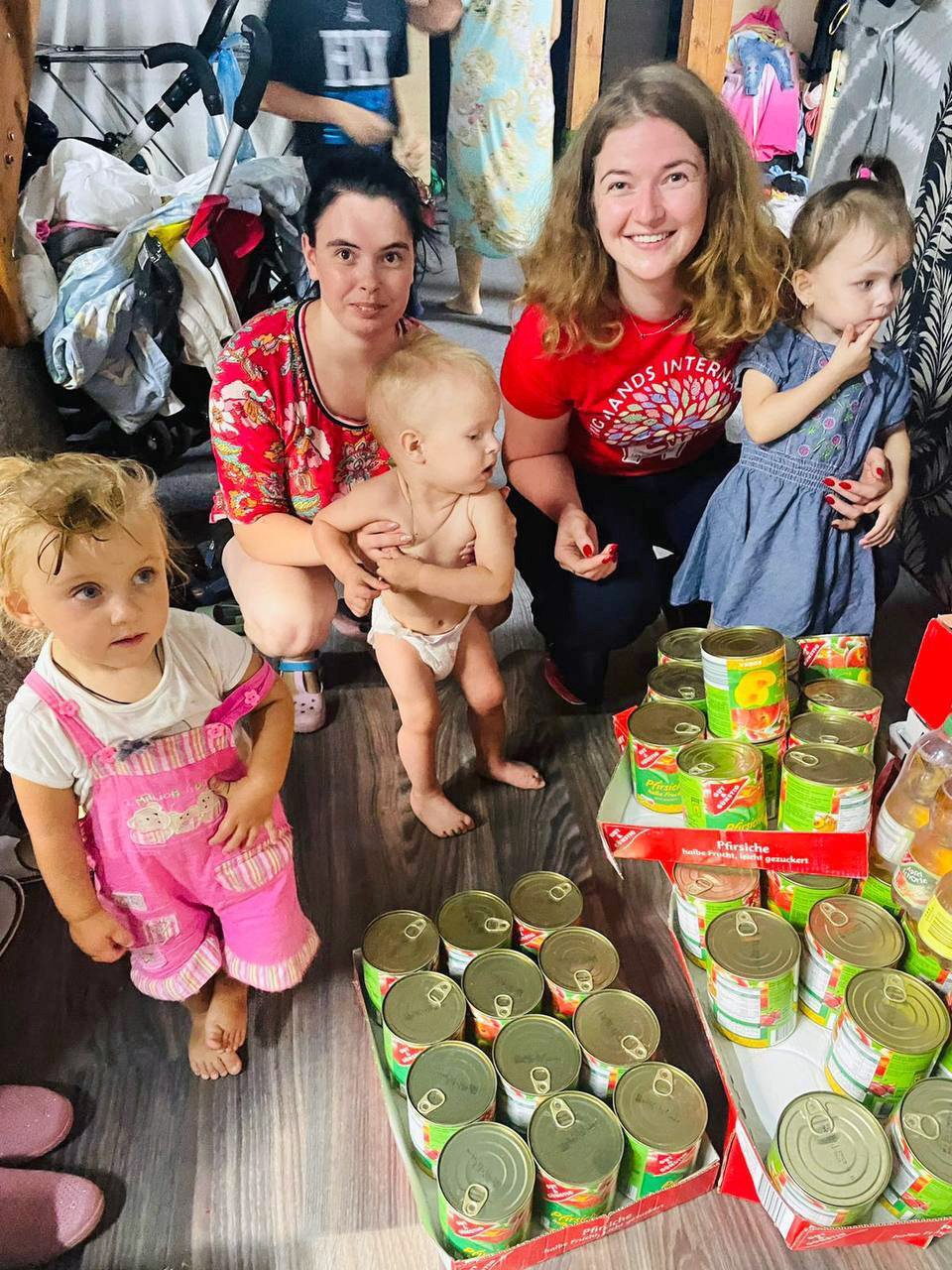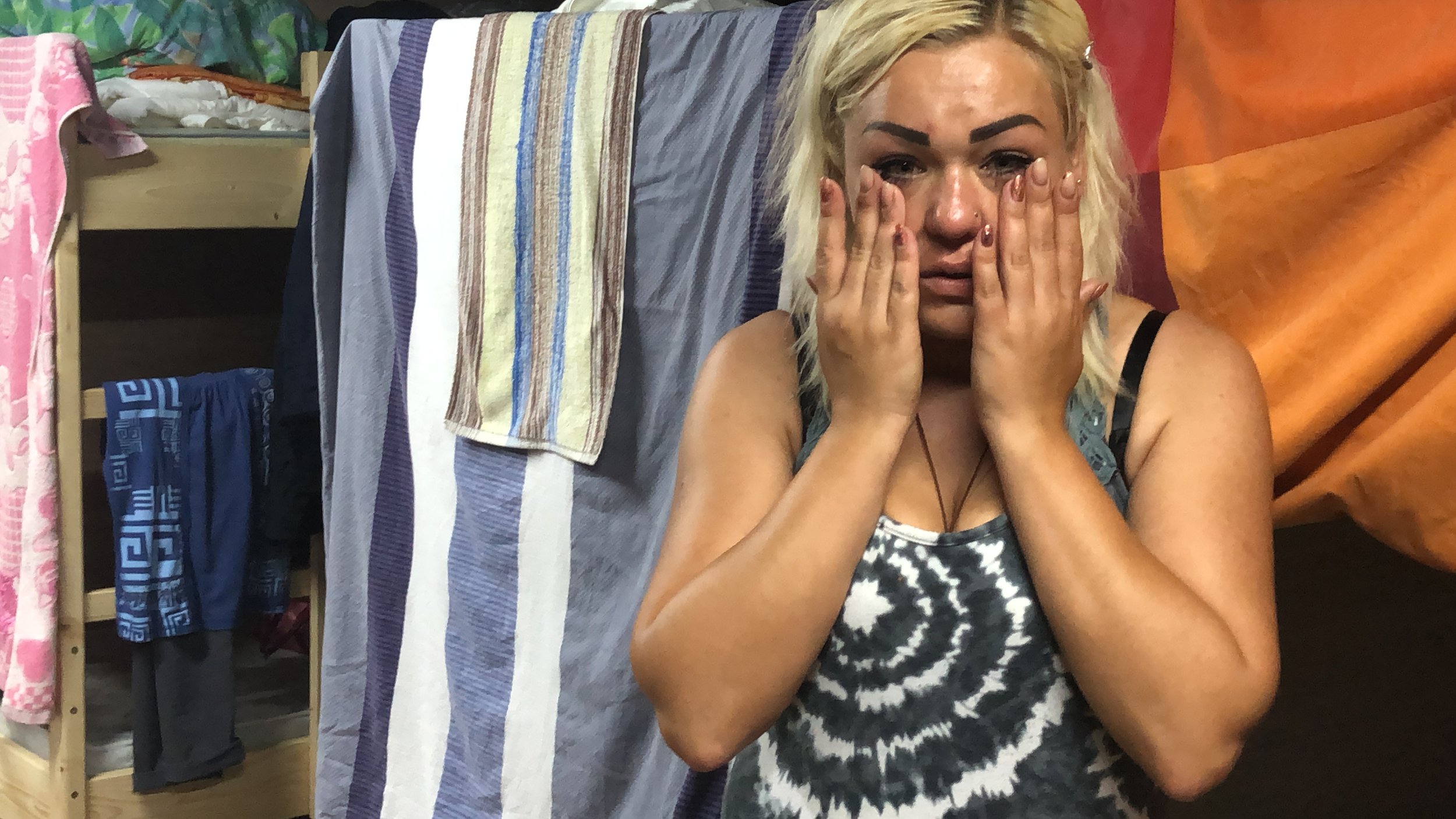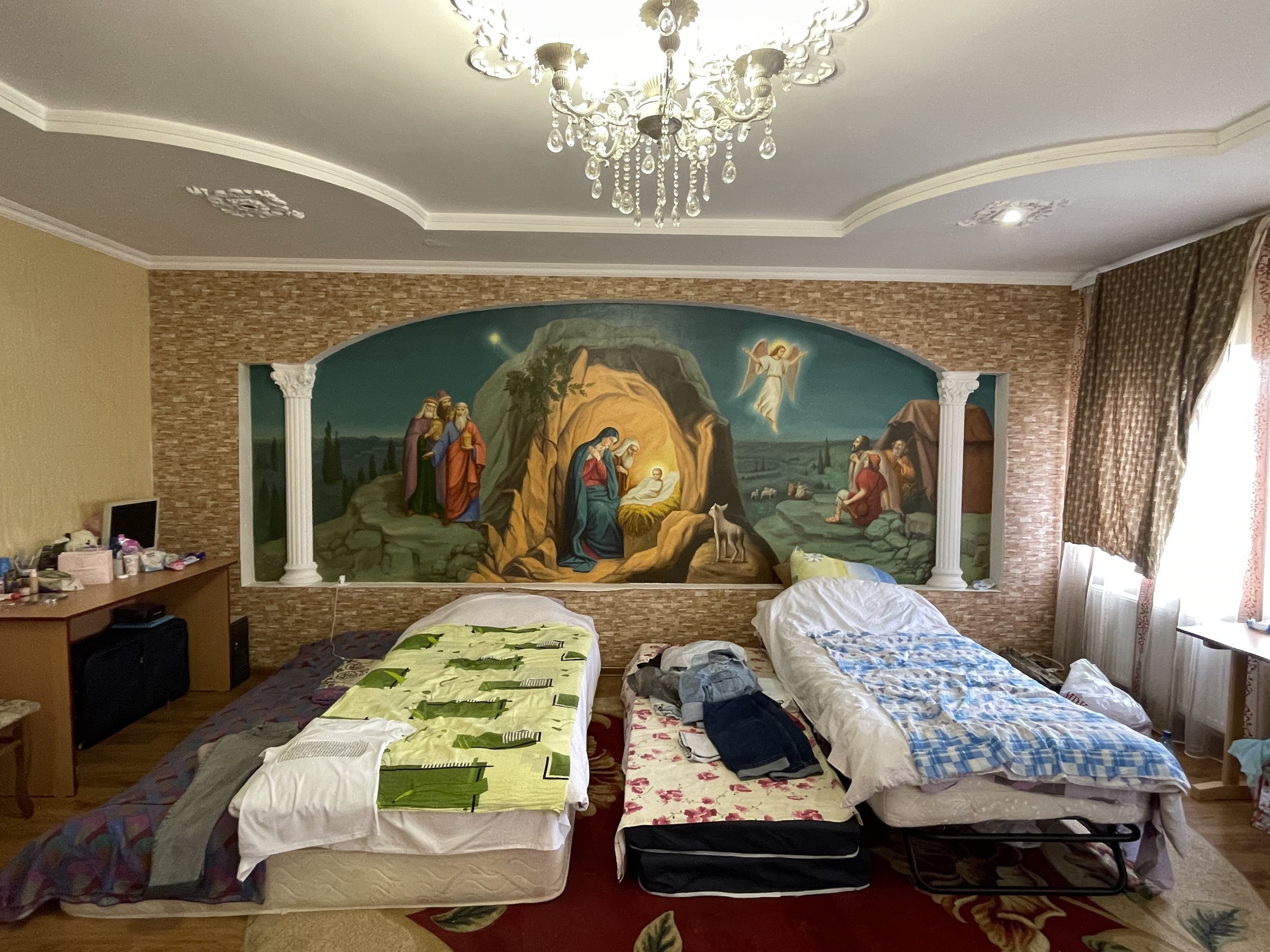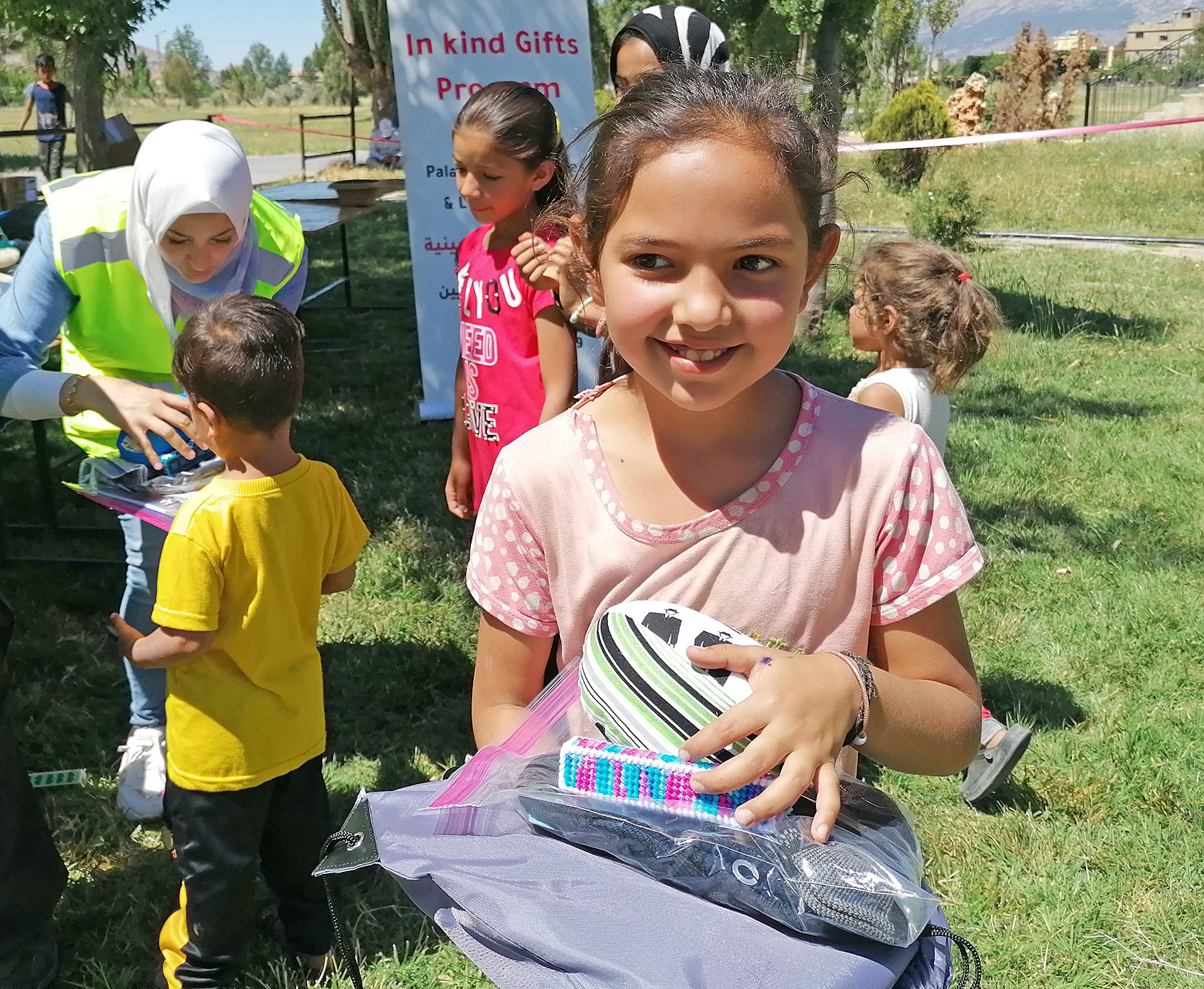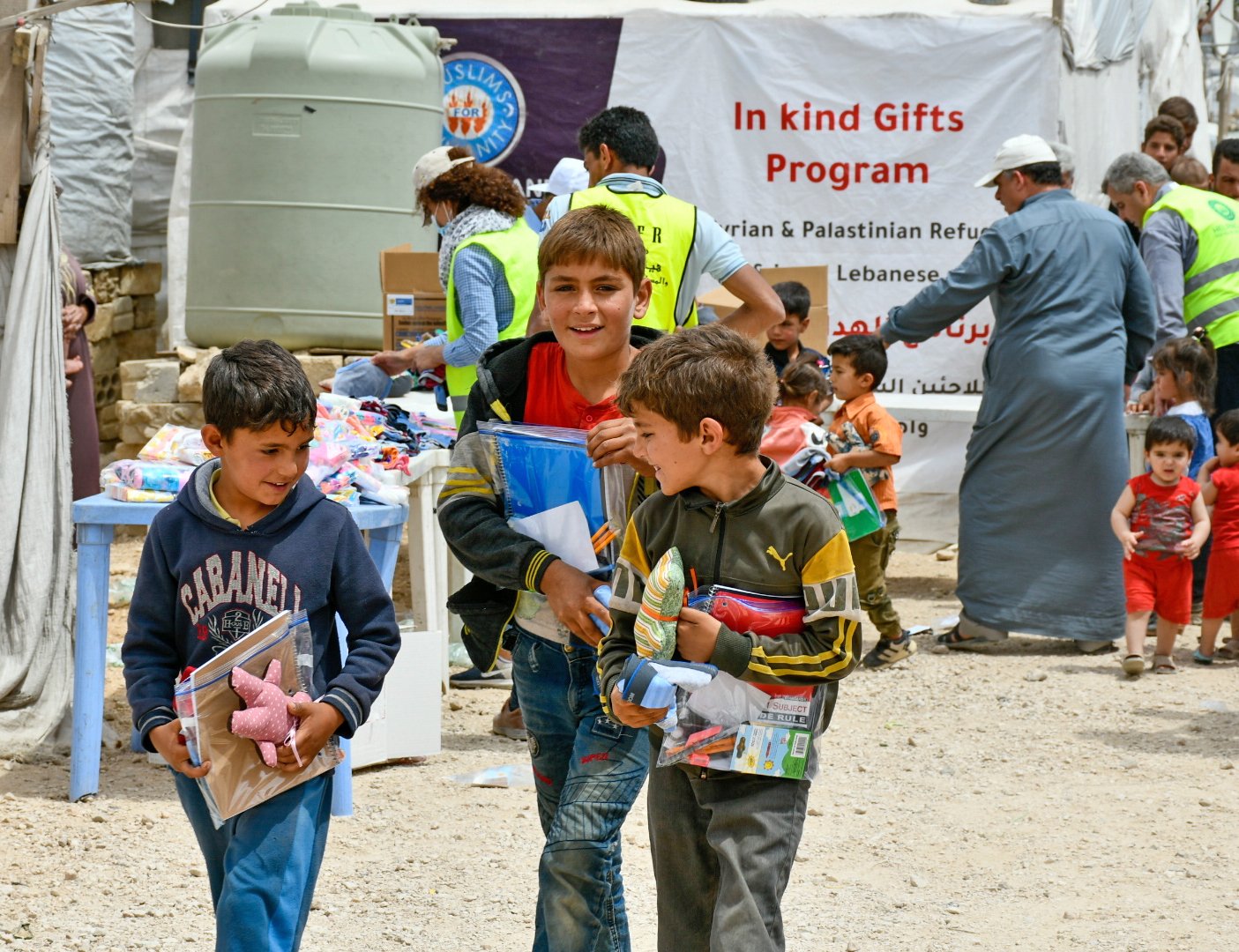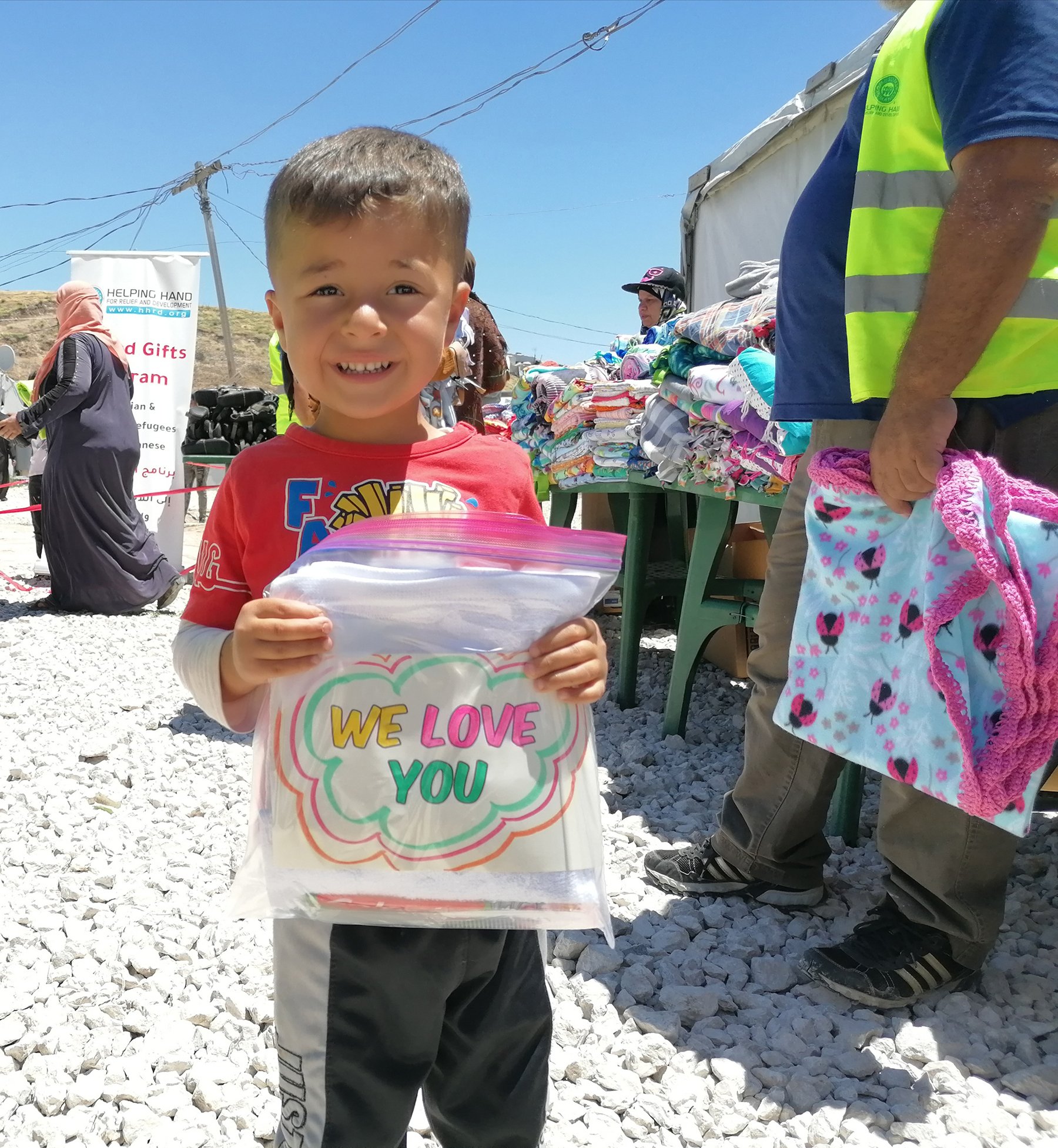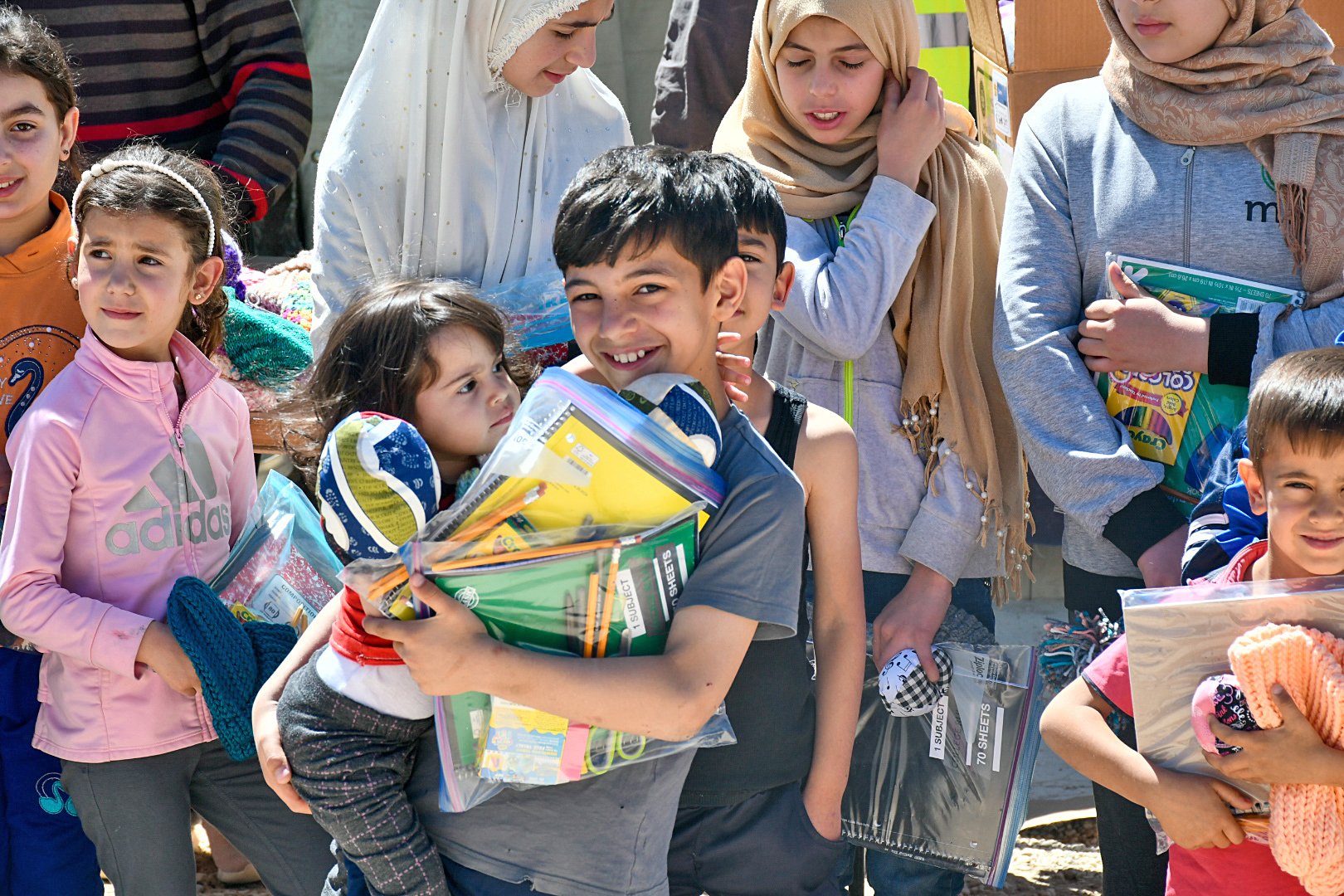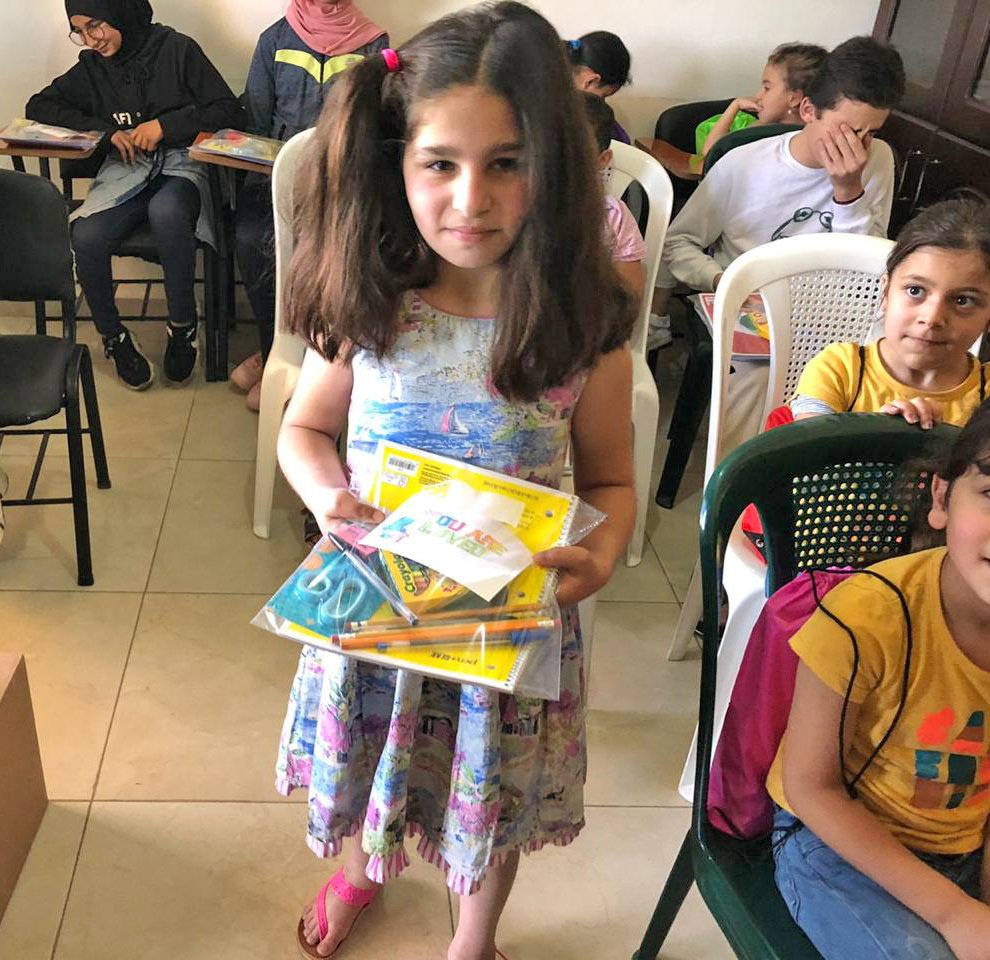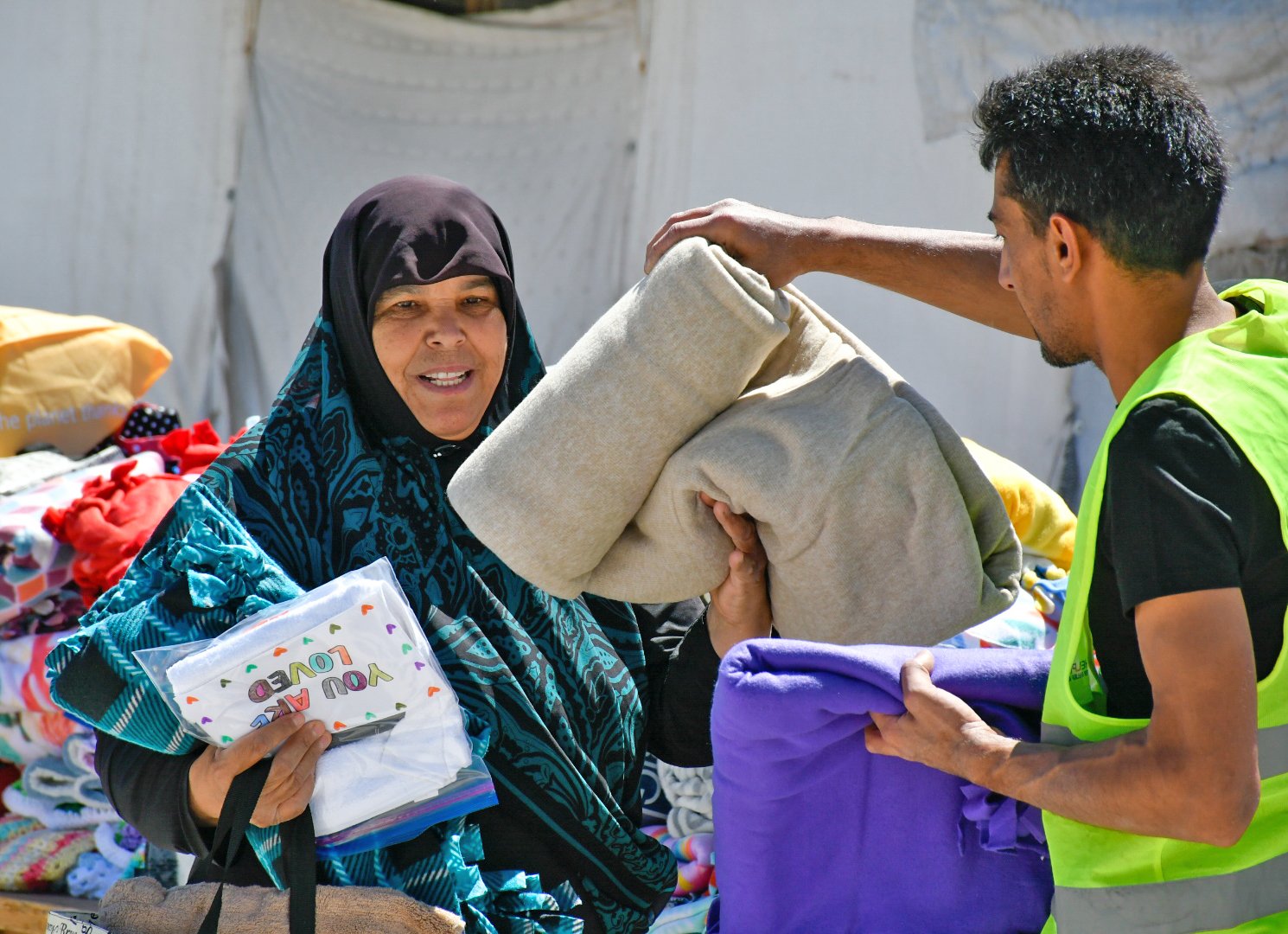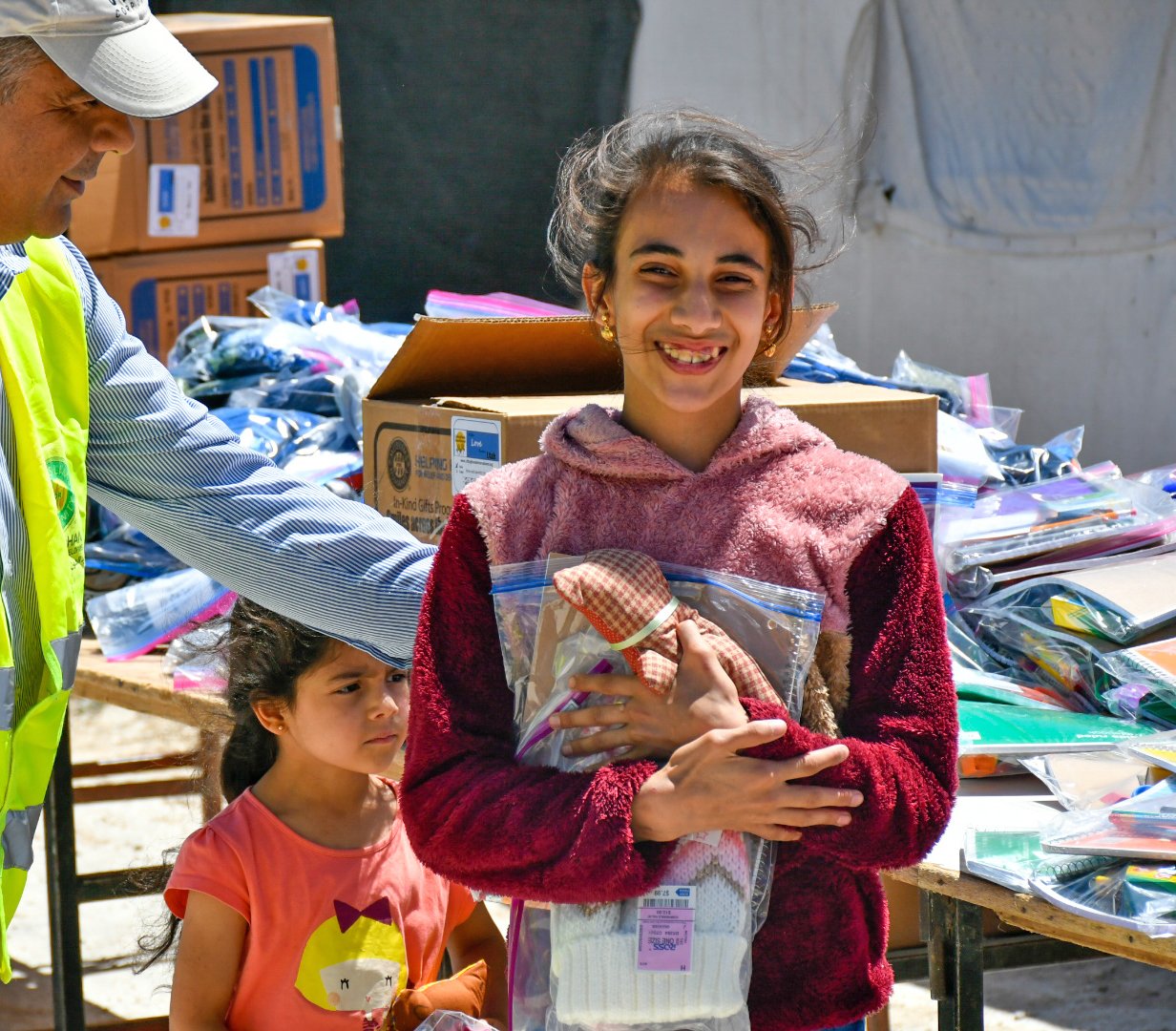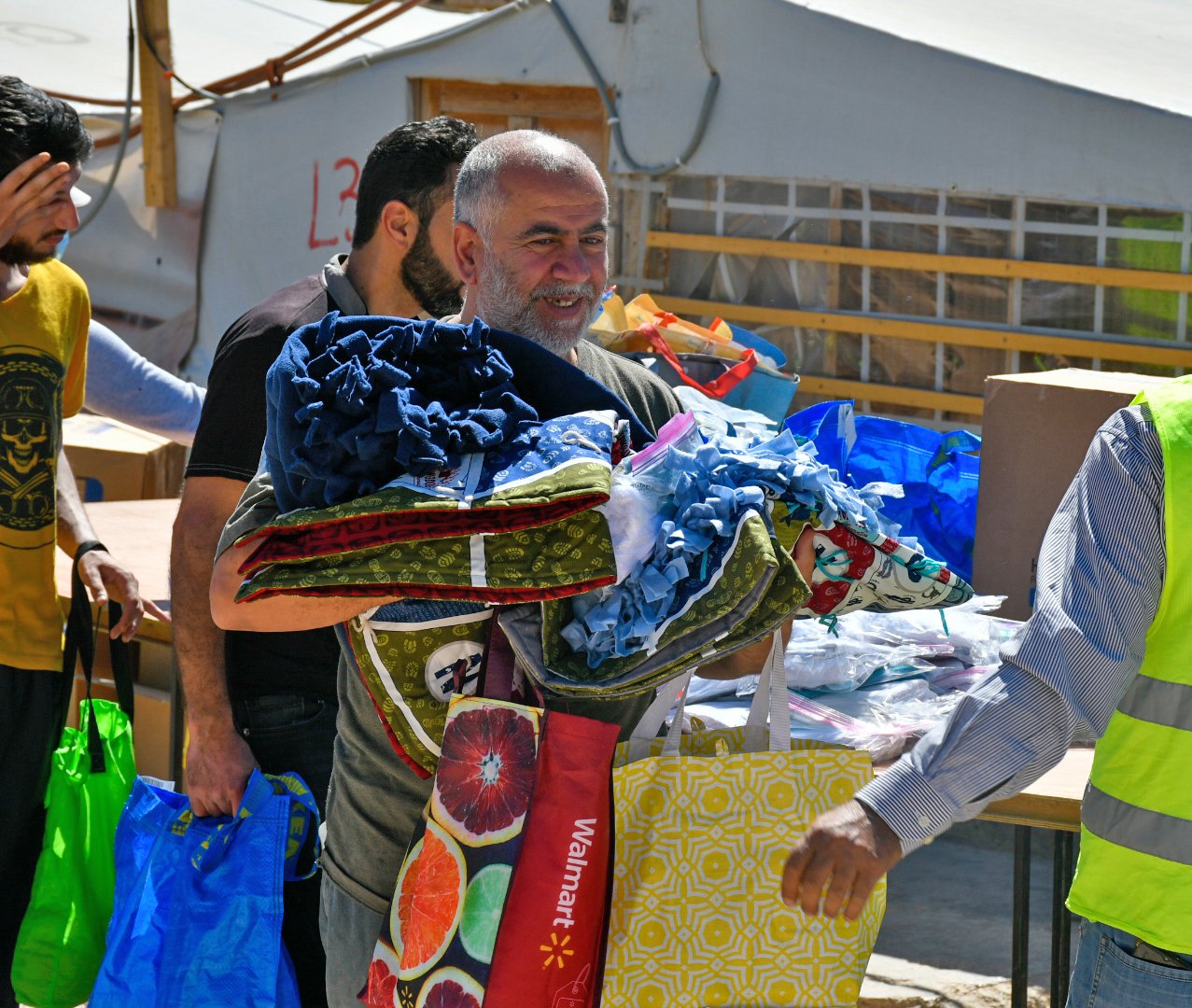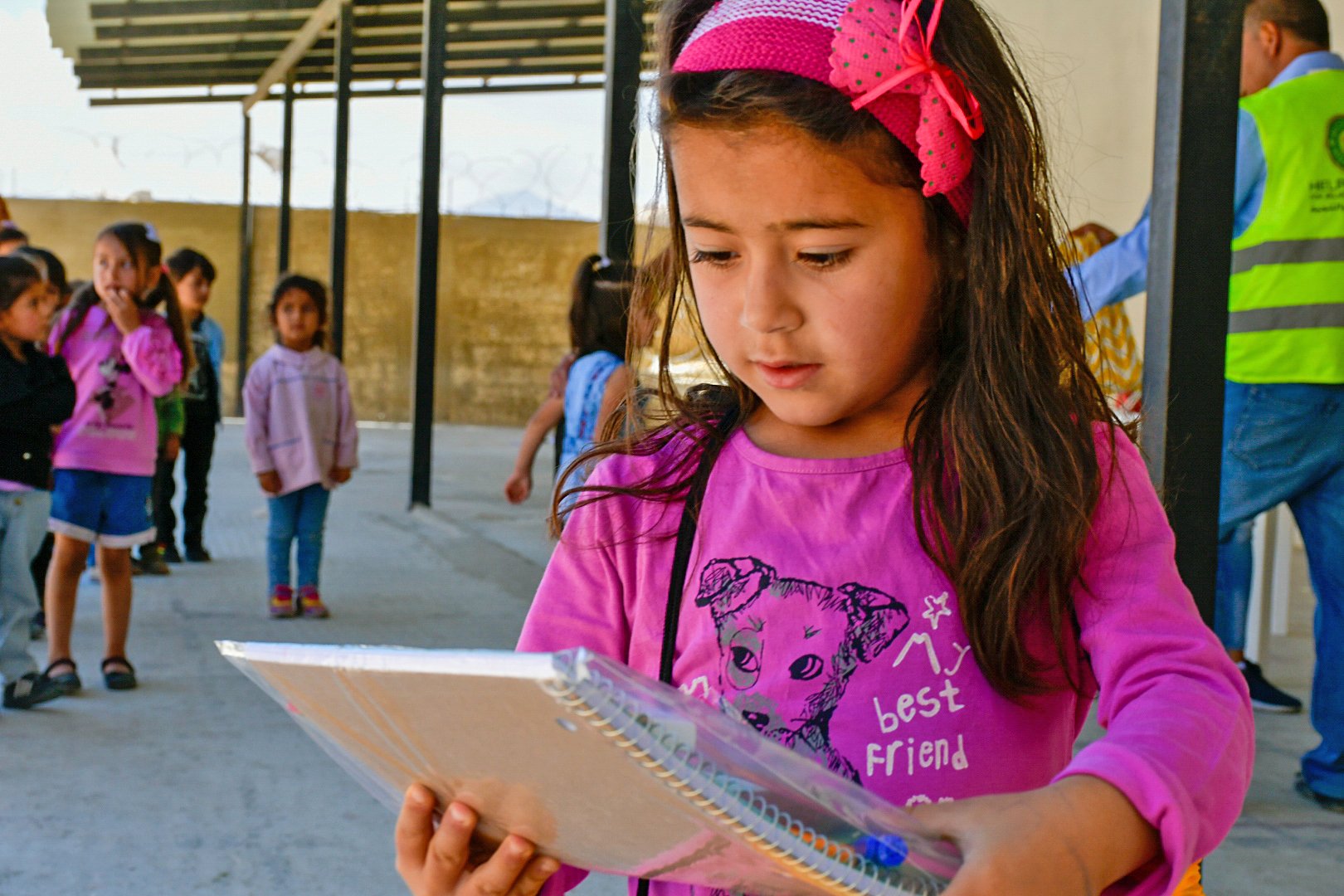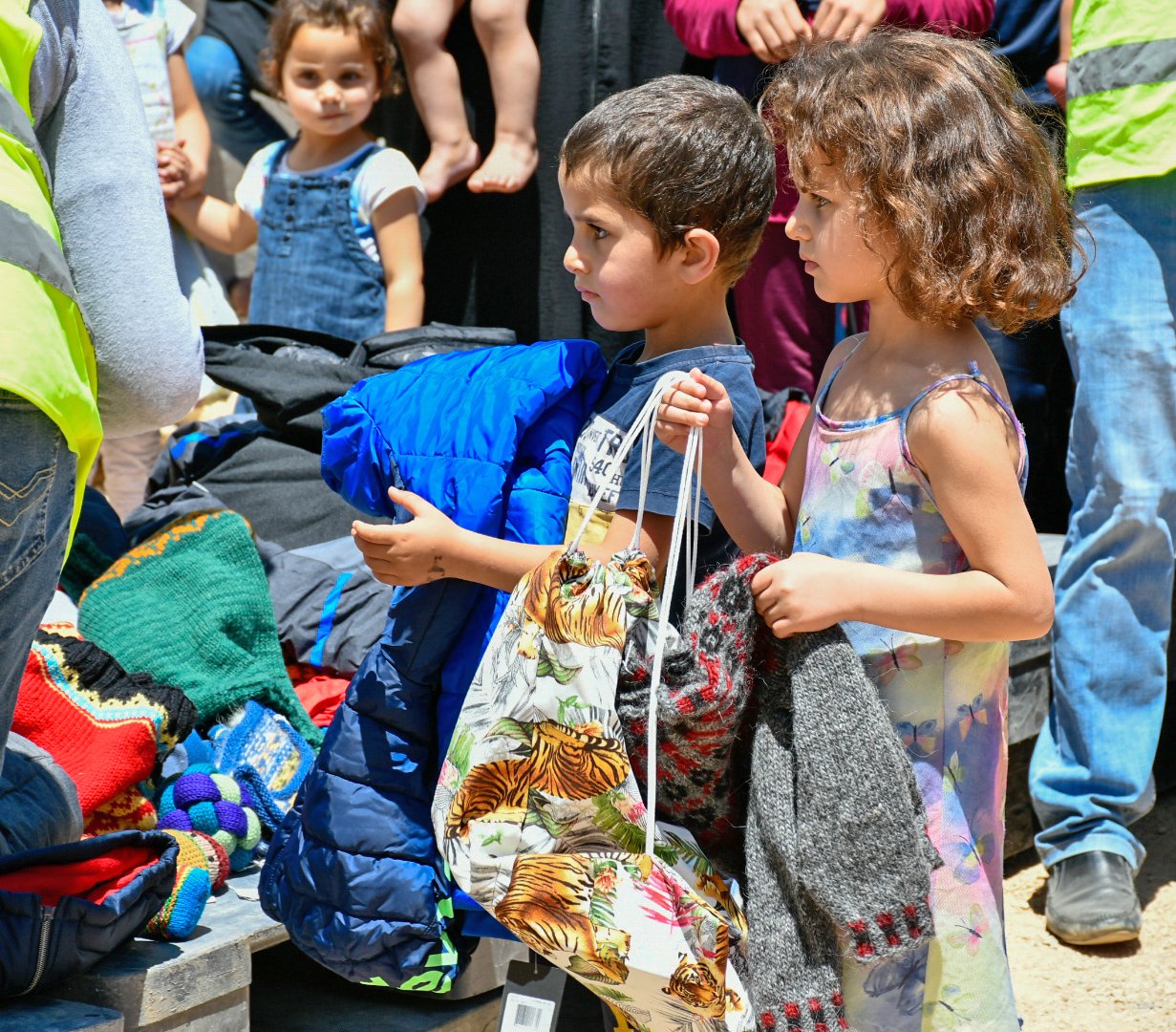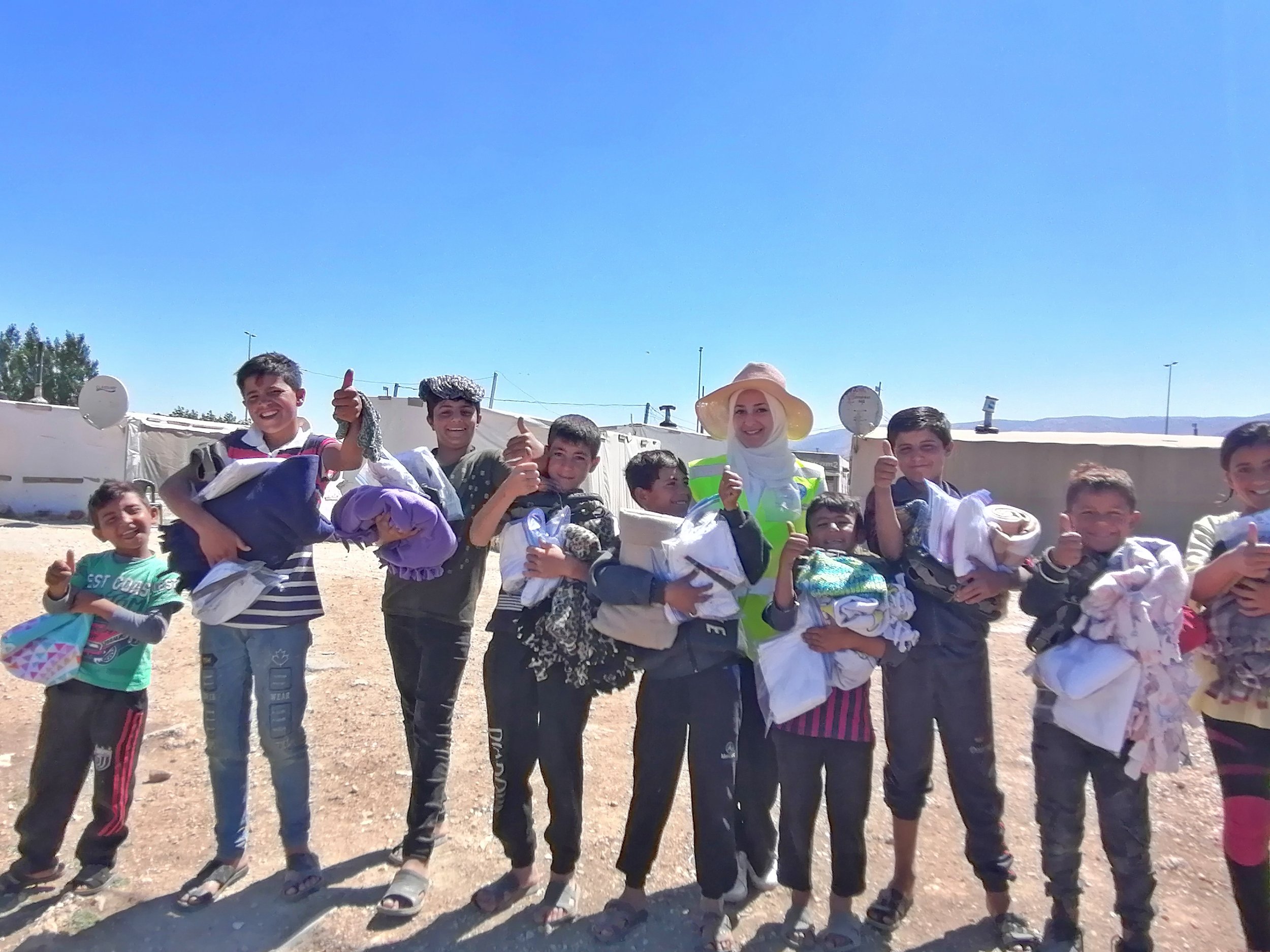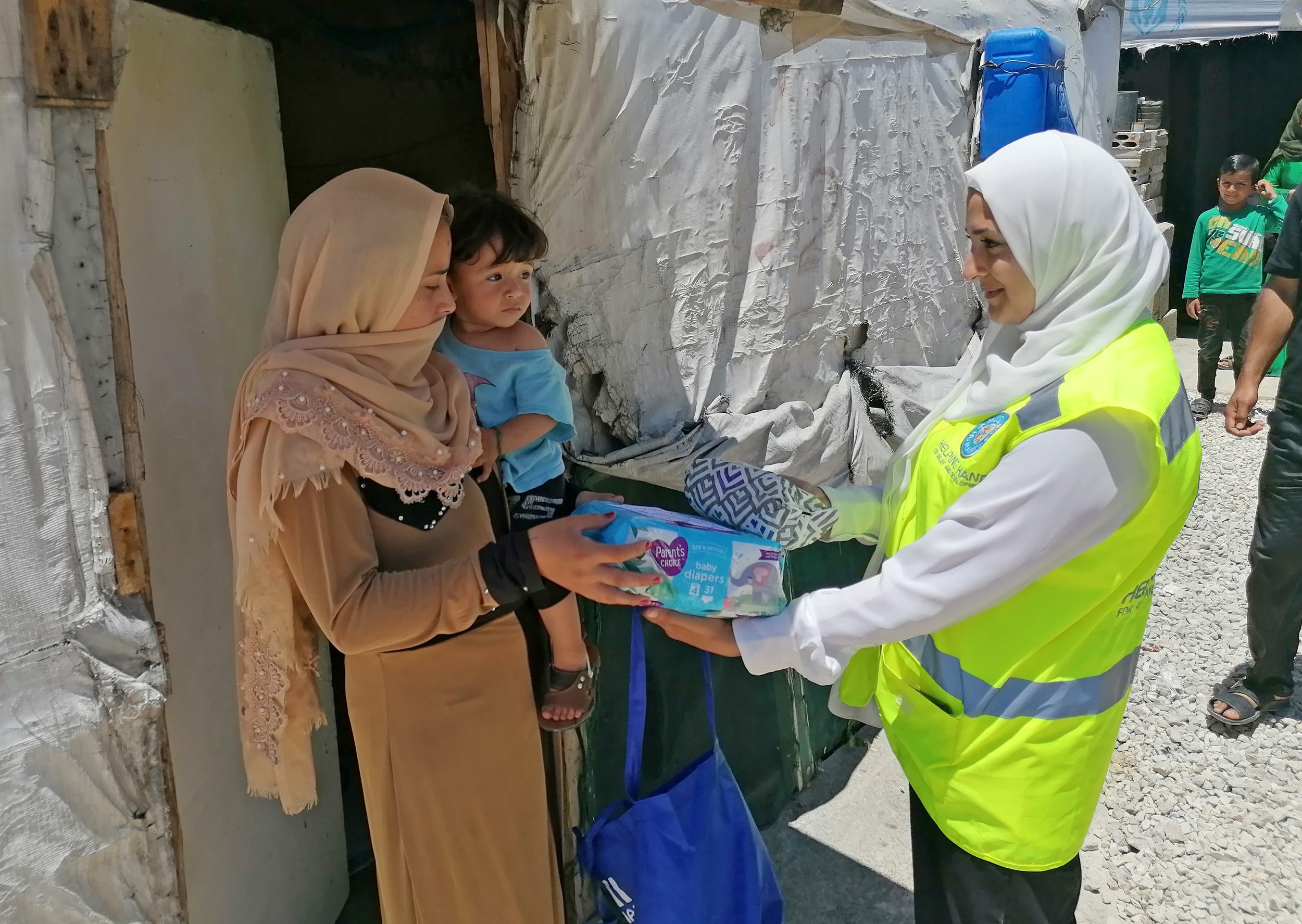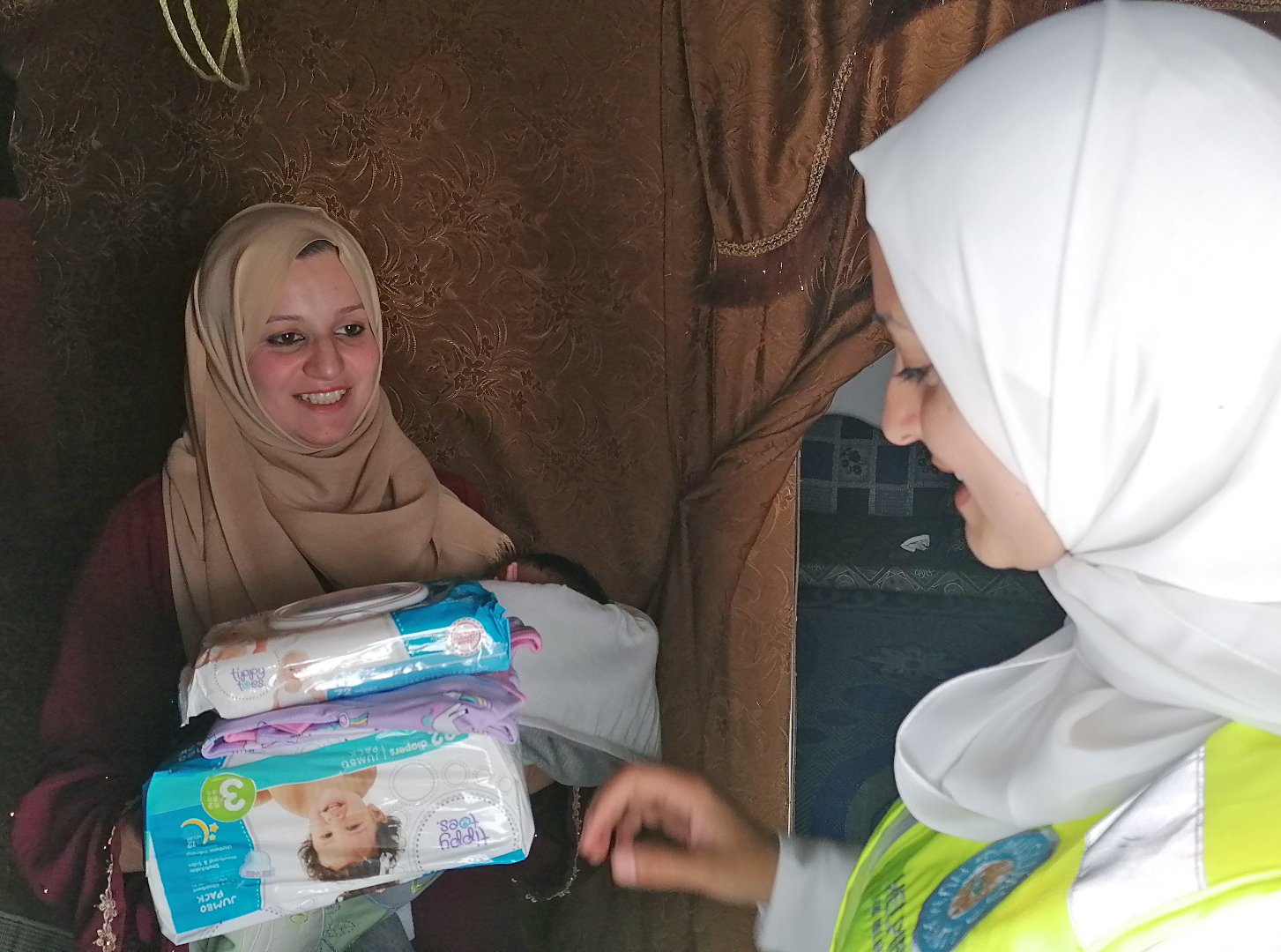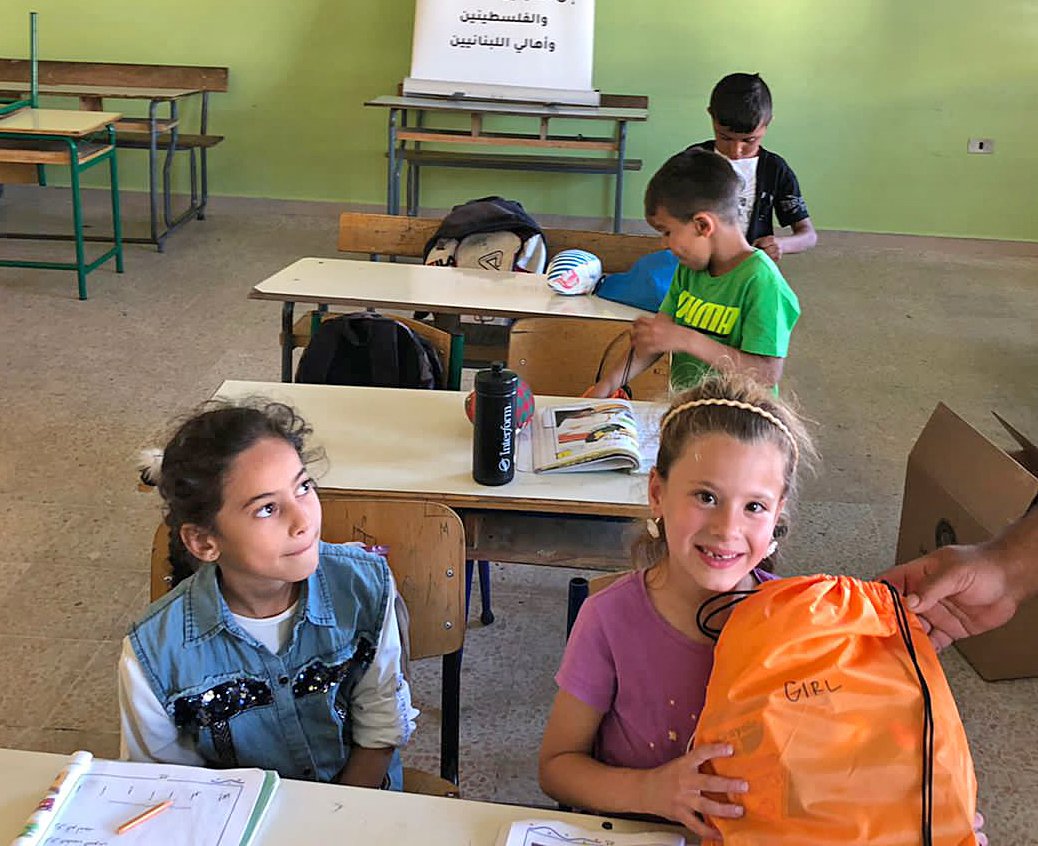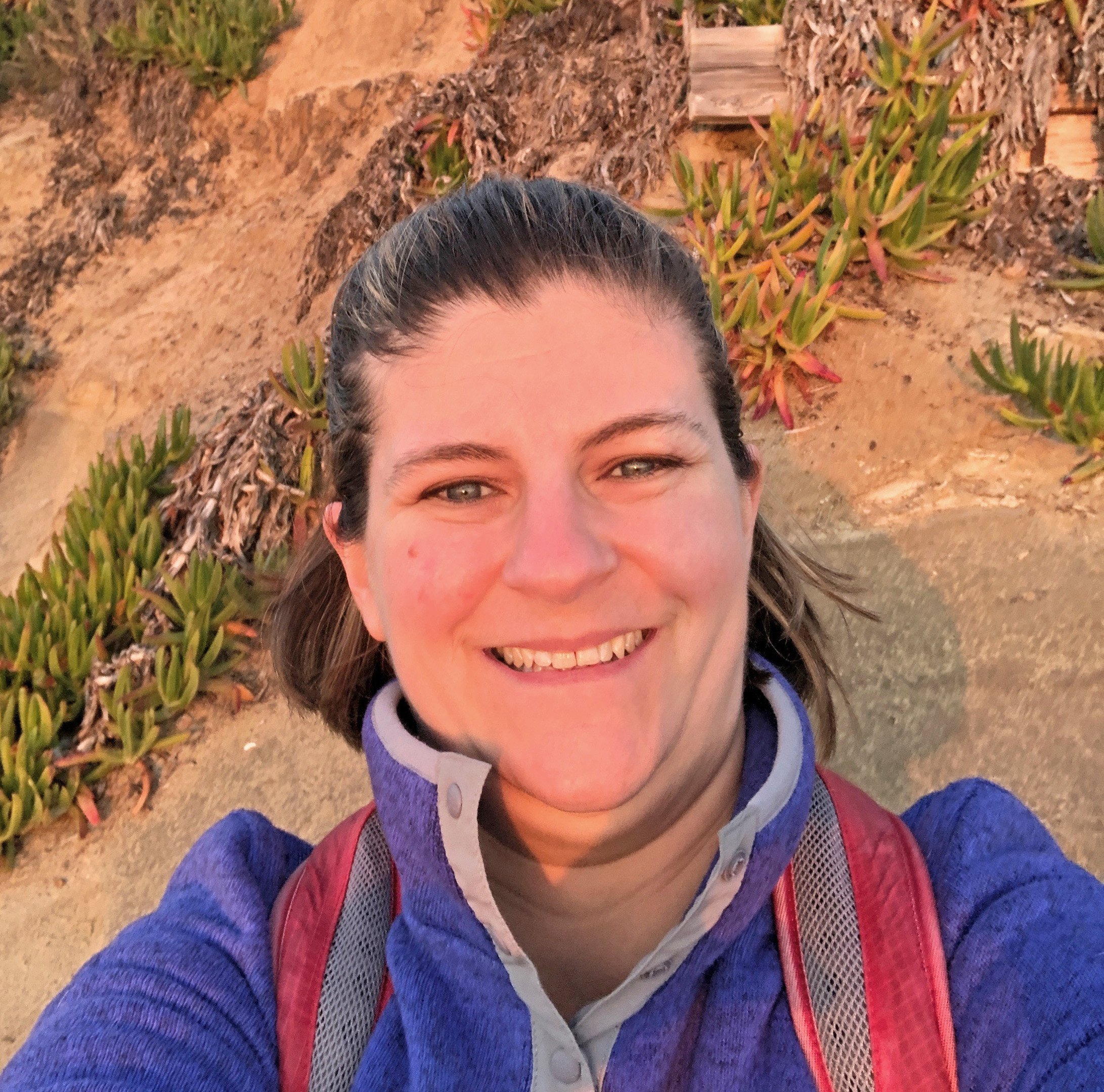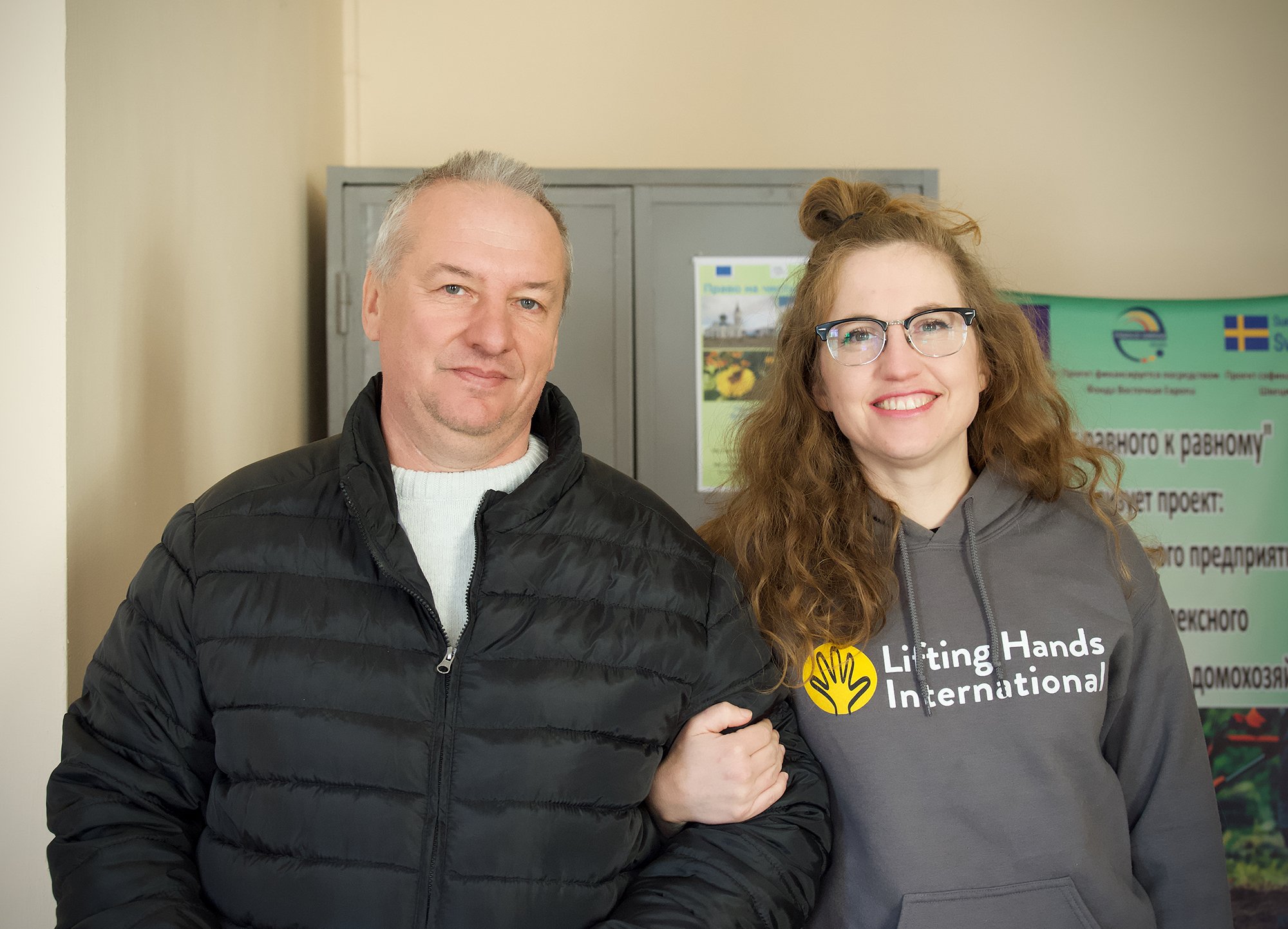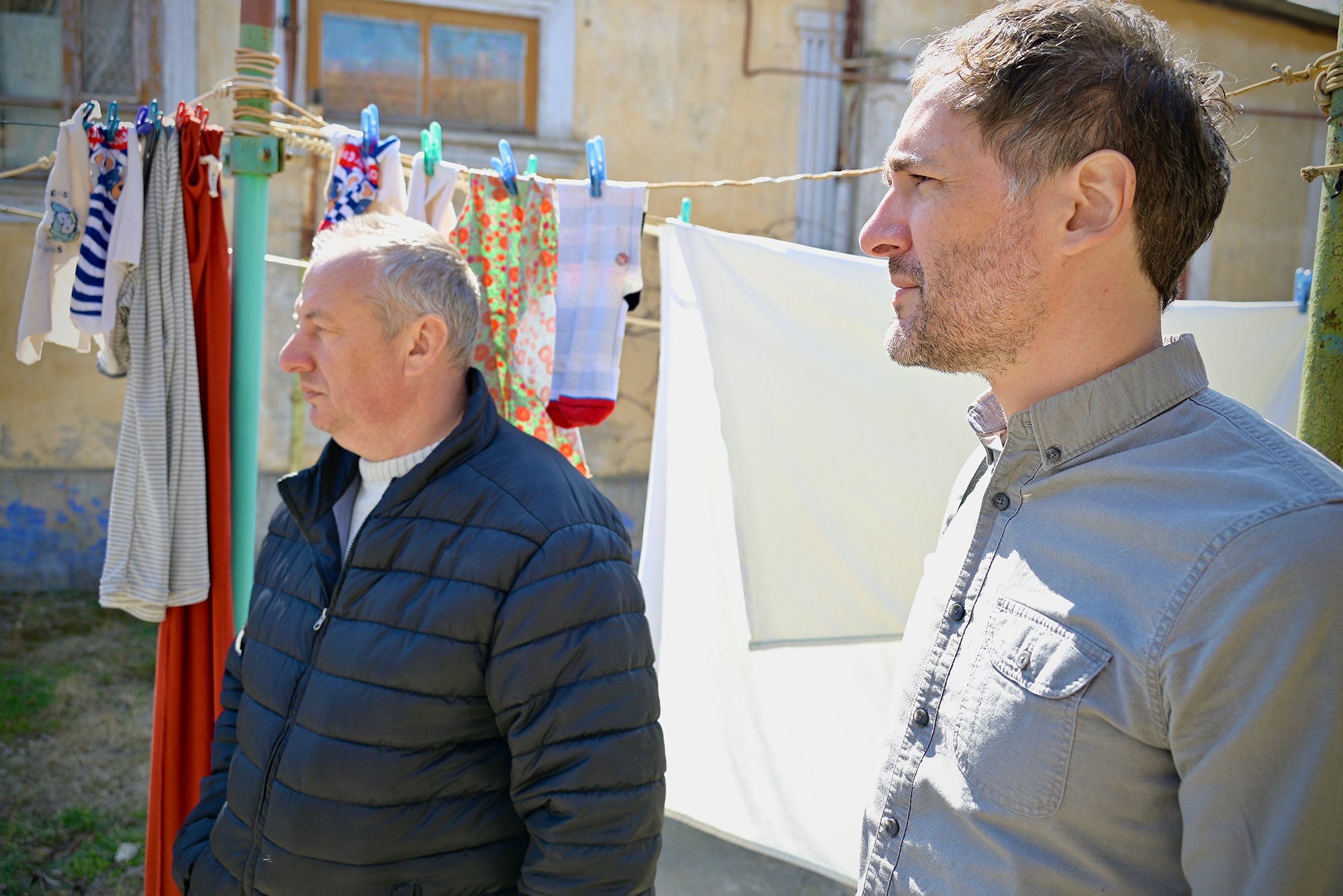by Brigid Rowlings, LHI Communications Director
Walker, LHI COO, and Hayley, LHI Founder and Director, along with Hisham from our partner HHRD distribute school supplies to Syrian children who live in camps in northern Jordan.
Lifting Hands International’s mission is to provide aid to refugees at home and abroad. LHI supports refugees who come from a wide range of locations and cultures but share a common experience—having to leave everything behind, flee their homes, and try to start over somewhere else.
Our second installment of our beneficiary spotlight series focuses on the people of Syria.
The Syrian Civil War Begins
In 2011, inspired by the success of the Arab Spring uprisings in Tunisia, Libya, and Egypt, some pro-democracy Syrians decided to try their hand at peaceful protest against the oppressive regime of President Bashar al-Assad. Unfortunately, these protests were met with violence from the Assad regime.
Tensions escalated between the Assad regime and opponents. Bodies such as the United Nations and the Arab League attempted to stop the violence through negotiations and brokered cease fires, but these efforts all failed or deteriorated. The European Union and the United States imposed sanctions and embargoes against Syria, but war broke out.
Refugee Crisis
The “life-vest graveyard” on Lesvos, Greece, during the height of the influx of Syrian and other refugees into Europe. Photo credit: Shannon Ashton, who accompanied us on this trip in December 2015.
As a result of these hardships, 13 million Syrians, half of the country’s population, fled their homes. Half of those 13 million Syrians fled to neighboring countries. The other half are displaced within Syria, living in camps. While people started fleeing Syria fleeing in 2011, the crisis didn’t really make the news until 2015, when more than a million refugees made their way to Europe on rubber dinghies.
Eleven Years On
Many Syrians cannot return home, even if they wanted to. The war is still going on and has become central to the international power dynamics between democratic countries such as the United States and the United Kingdom, both of which support the opposition, and authoritarian-leaning countries such as Russia and Iran, which support the Assad regime.
Moreover, years of war and sanctions have led to the collapse of the Syrian economy. Before the war, Syria was considered a middle income country. Now, over 80% of its population lives in poverty. In addition, key infrastructure such as roads, sanitation systems, electric and water treatment plants, housing and schools have been destroyed.
How LHI Helps
This kiddo was telling the BEST jokes in Arabic! Hayley and Walker visit a small Syrian camp in northern Jordan.
Lifting Hands International helps internally displaced Syrians and Syrian refugees by sending humanitarian aid to places like Syria, Jordan, Lebanon and Turkey through our International Aid program. This aid includes items such as clothing, hygiene kits and baby kits.
Over 2 million Syrians fled to neighboring Jordan. Many of those refugees come from southern Syria, a region that is home to generations of goat and sheep herders. When Syrian refugees left home, they all had to leave their flocks and farms behind, only to be stolen by the regime.
A strong Syrian mama and her family welcome their two new milk goats courtesy of our generous donors! Madaba, Jordan.
LHI runs our Gather for Goats program in rural Jordan, where many Syrian families have settled. This program provides Syrian families in Jordan with milk goats that provide a consistent source of nutritious milk. And families often sell the baby goats, generating income that leads to more self-sufficiency.
To learn more about what our Gather for Goats program means for Syrian refugees in Jordan and to watch a video of Hayley distributing goats to families, click here










